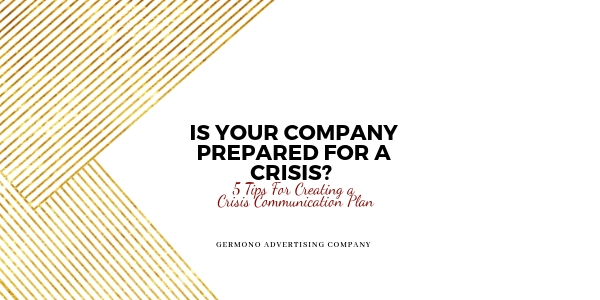
06 Jul Is Your Company Prepared for a Crisis? Five Tips For Creating a Crisis Communication Plan
When a crisis occurs, it can be hard to see through the chaos. Planning is key to effectively communicating during a crisis. Using the trusty who, what, when, where, why, you can set yourself up for success should a crisis ever occur. It is important to note that a crisis communication is supplemental to an organization’s crisis management plan.
What: I know the what “should” be second in our fun list, but for crisis communication planning, I start with the what. Begin by making a list of every potential crisis that could occur in your organization. Depending on your organization, this could range from something such as a fire to employee theft to a social media hack. Don’t hold back. Think of every possible crisis that could happen.
Who: Next, identify your communication team and the roles of each team member during a crisis response. How will your team communicate with each other during a crisis? What if there is no power? How can your team relay information? Plan these details. You may need to develop back up internal communication methods.
Also, identify with whom you need to communicate. This may include employees, stakeholders, the media (also can be a “how”), family members of employees, the public, etc. The who can also vary depending on the what.
When: When to communicate is critical. Depending on the crisis, communication times can vary; however, it is important to communicate as quickly as possible. Generally, an organization has about one hour to provide an official communication before things begin to spiral out of control. In the world of social media, this timeframe continues to get smaller and smaller. At minimum, you can begin with communicating that a crisis has occurred, you’ll share more details as they are available and identify the main point of contact for the crisis communication efforts.
Where: Now that you know when you’ll respond, identify where you will respond and what tools you will use. The “where” could include things such as media entities, company website, social media accounts, email, newspaper, radio, etc.
How: Messaging is key. It is important to work in advance to develop appropriate responses to each potential crisis. It is also important to ensure the messaging is appropriate for the variety of people with whom you will be communicating. The messaging you may use for media entities will be different than the messaging you will use with your employees.
There are a variety of other details that go into creating a full crisis communication plan, but starting with these basics will get you started. Of course, if your organization needs assistance developing a plan, we’re happy to help. Email me at jennifer@germono.com.
